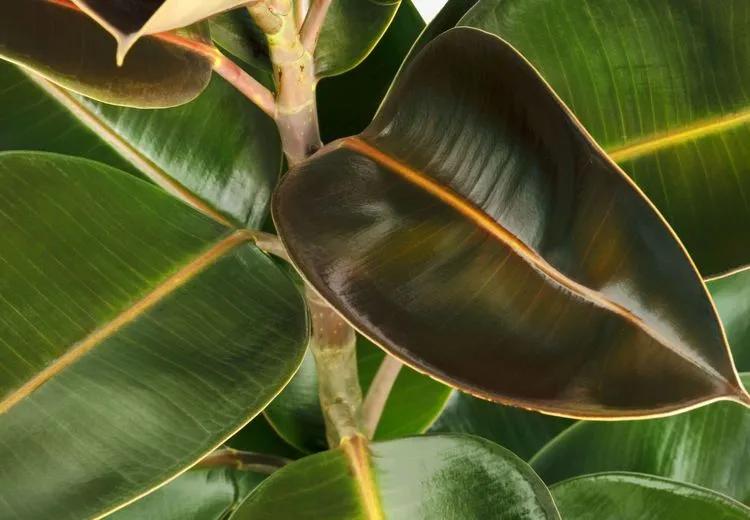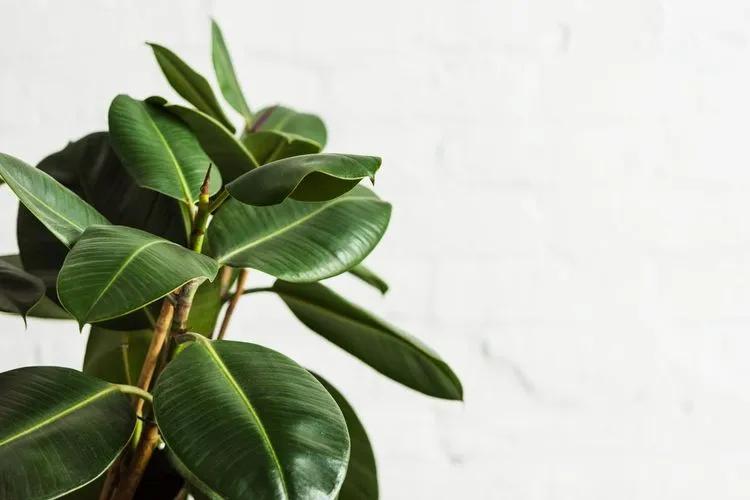 The rubber plant gets its name from the latex it produces because it was used to make rubber. Ficus elastica is a popular medium-sized house plant with wide shiny dark-green leaves. They can grow significantly in several years, especially if you put the plants outside during the summer. Following easy instructions, your rubber fig will delight your family for long years - let’s figure out all the preferences of this plant.
The rubber plant gets its name from the latex it produces because it was used to make rubber. Ficus elastica is a popular medium-sized house plant with wide shiny dark-green leaves. They can grow significantly in several years, especially if you put the plants outside during the summer. Following easy instructions, your rubber fig will delight your family for long years - let’s figure out all the preferences of this plant.
Watering
This plant needs abundant watering during the active growth season. However, it is necessary to moisten the soil mixture in the pot only when the top layer dries out by about 2 fingers in depth. On average, in the spring-summer period, watering is carried out twice a week, and in the cold season - once a week. Droopy leaves indicate a need for more water.
Temperature
In the spring-summer period, the bush grows best at an indoor temperature of 20-25°C (68-77°F). A short-term temperature rise of up to 30°C (86°F) will not do much harm to it. Itt is recommended to move it to a cool place in winter, but make sure that the air temperature does not drop below 15°C (59°F). Also, avoid sudden drops in temperatures.
Light
 The rubber plant is one of the light-loving plants, so it requires bright diffused sunlight for successful growth. However, do not leave it under direct sunlight since the rays, especially when combined with summer heat, can harm the plant and cause sunburns. Rubber plants can tolerate little shade, but in this case the growth and development will be much slower. You can tell that the plant needs more light if it becomes leggy and its foliage loses its luster.
The rubber plant is one of the light-loving plants, so it requires bright diffused sunlight for successful growth. However, do not leave it under direct sunlight since the rays, especially when combined with summer heat, can harm the plant and cause sunburns. Rubber plants can tolerate little shade, but in this case the growth and development will be much slower. You can tell that the plant needs more light if it becomes leggy and its foliage loses its luster.
Air humidity
In spring and summer, spray the foliage systematically to increase the level of air humidity. Also, wipe the leaves with a soft moistened cloth once in two weeks to remove the dust. It is recommended to shower the plant in warm water once a month. However, these pieces of advice are to be followed only in the active growth period. During winter, it is not recommended to moisten the foliage; instead, wipe it with a slightly wet cloth.
Fertilizing
 The rubber plant needs regular feedings from April to September once every 15 days to maximize the development. Use liquid organic matter and mineral fertilizers with high nitrogen content. Always dilute the amount of fertilizer in half.
The rubber plant needs regular feedings from April to September once every 15 days to maximize the development. Use liquid organic matter and mineral fertilizers with high nitrogen content. Always dilute the amount of fertilizer in half.
Common issues
undefined
Pests
The rubber plant is distinguished by relatively high resistance to various diseases and pests. Very rarely, spider mites or scale insects settle on ficus elastica. If this happens, rinse the foliage with an infusion of tobacco dust. To prepare, mix 1 liter of water with 4 tbsp. l. dust, and a small amount of soap. A couple of hours after applying the solution to the foliage, it is washed with clean water. If scale insects have settled on the bush, then before processing, try to remove all pests from it, for this use a regular cotton swab. And remember: if leaves are kept clean, the plant cannot suffer from pests, as they bypass it. Thus, do not forget about regular wipings.
Loss of foliage
If only the lower leaves fall off, then there is no need to worry, because this is a completely natural process associated with the aging of the plant. However, if it is not the case, underwatering or overwatering, poor lighting, a sharp change in temperature might be the reasons.
Leaves getting yellow
 As a rule, leaves first turn yellow, and then die off and fall off. However, foliage can also change color to yellow due to excessive nutrients in the soil. In this case, rinse the potting mix: add a volume of water that could fill 3 such empty plant pots in which the ficus grows. After rinsing, feeding is suspended for 8 weeks. Also, it is important not to water the plant again until the potting mix dries to avoid root rotting.
As a rule, leaves first turn yellow, and then die off and fall off. However, foliage can also change color to yellow due to excessive nutrients in the soil. In this case, rinse the potting mix: add a volume of water that could fill 3 such empty plant pots in which the ficus grows. After rinsing, feeding is suspended for 8 weeks. Also, it is important not to water the plant again until the potting mix dries to avoid root rotting.
High salinity might be another reason for the change of color. Replanting into fresh soil will help. Excessively large containers can also cause yellowing of the foliage - do not select too big pots. Finally, yellow leaves can be a sign that rot has appeared on the roots. If you smell the soil mixture, then it will smell like rot. In this case, remove all the rotten root areas with a sterile and sharp instrument.
